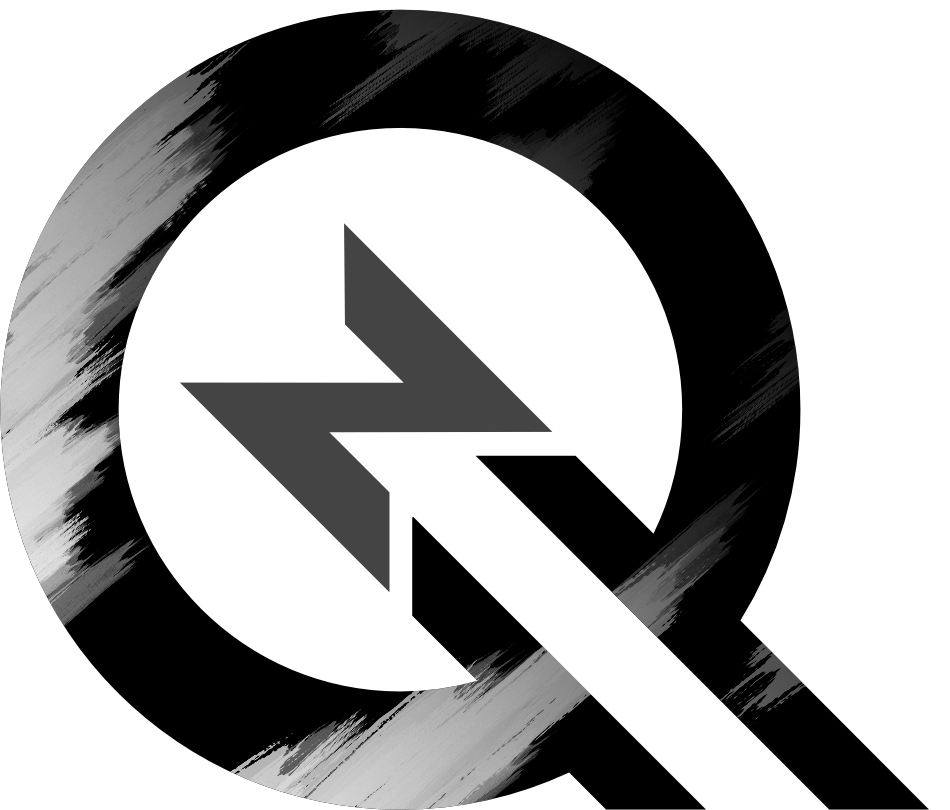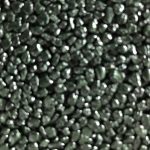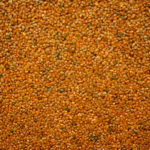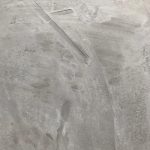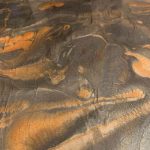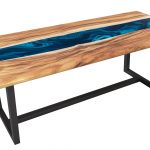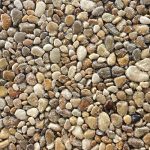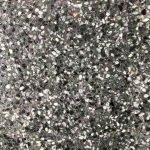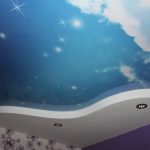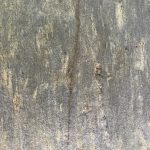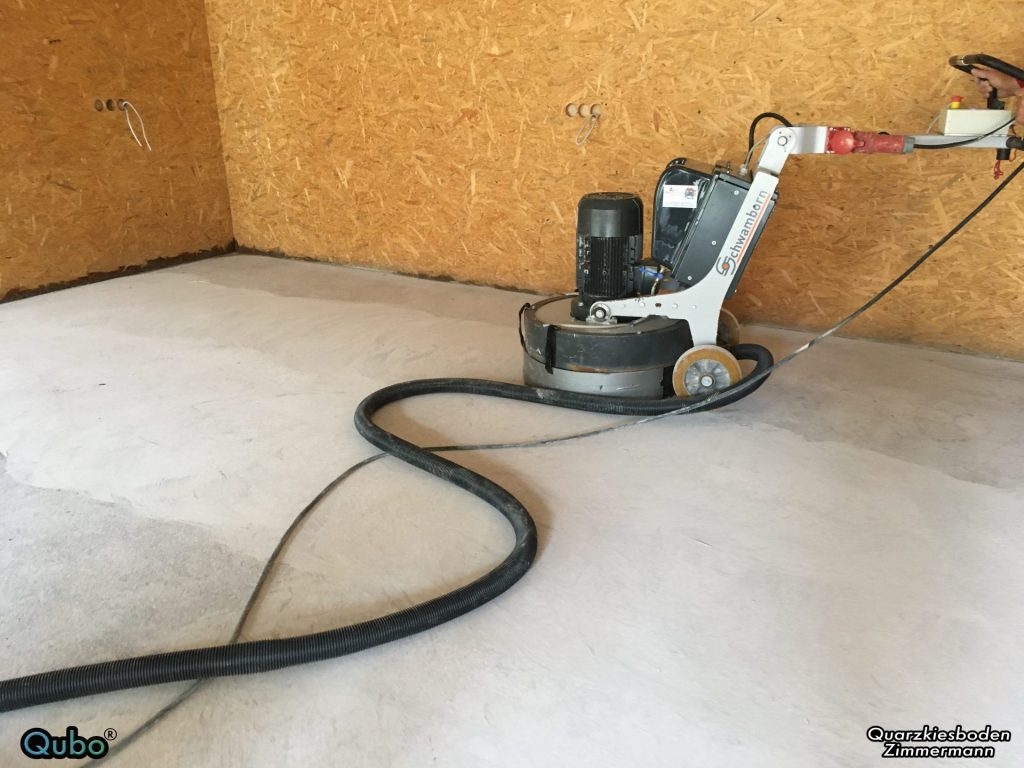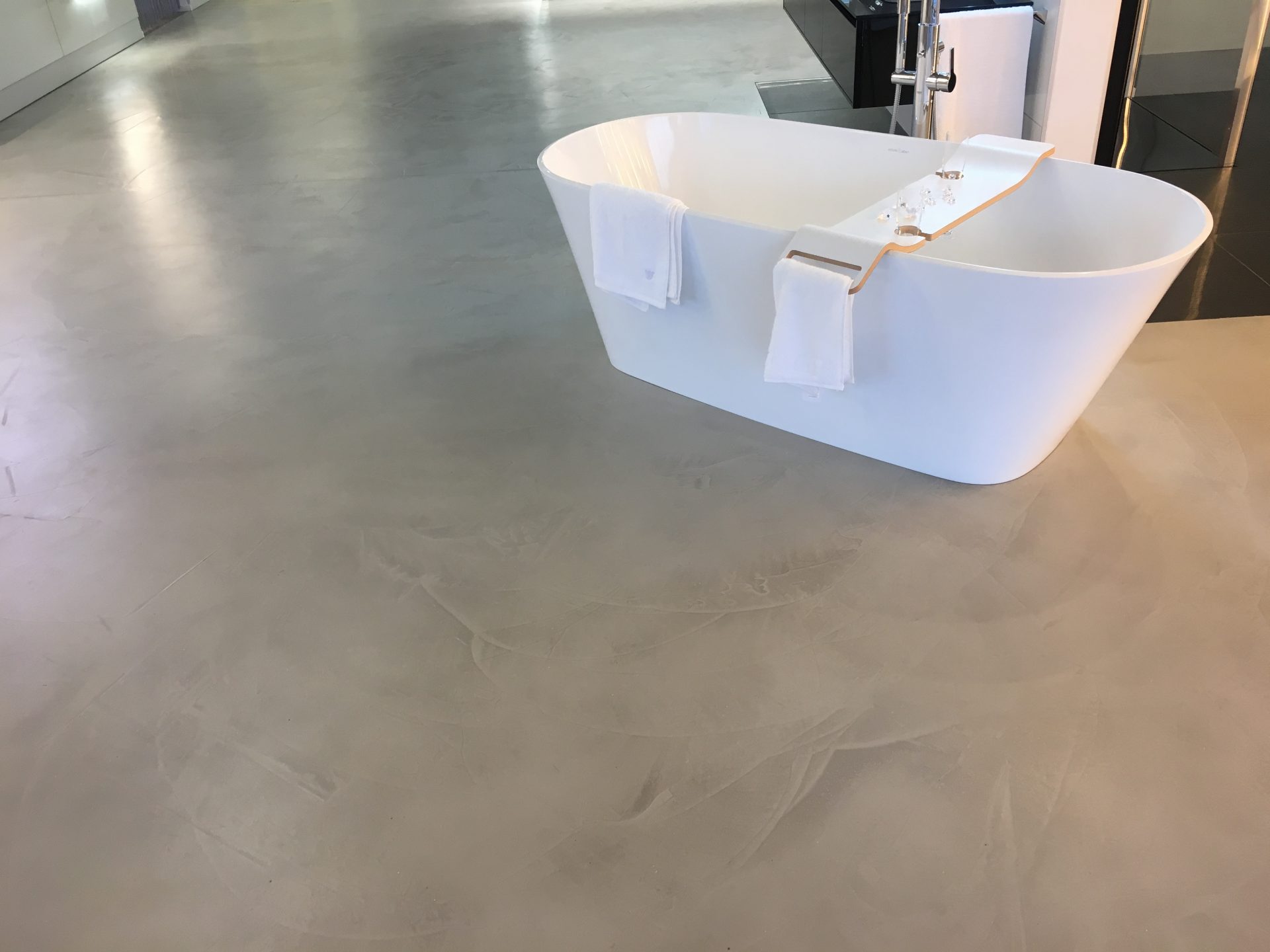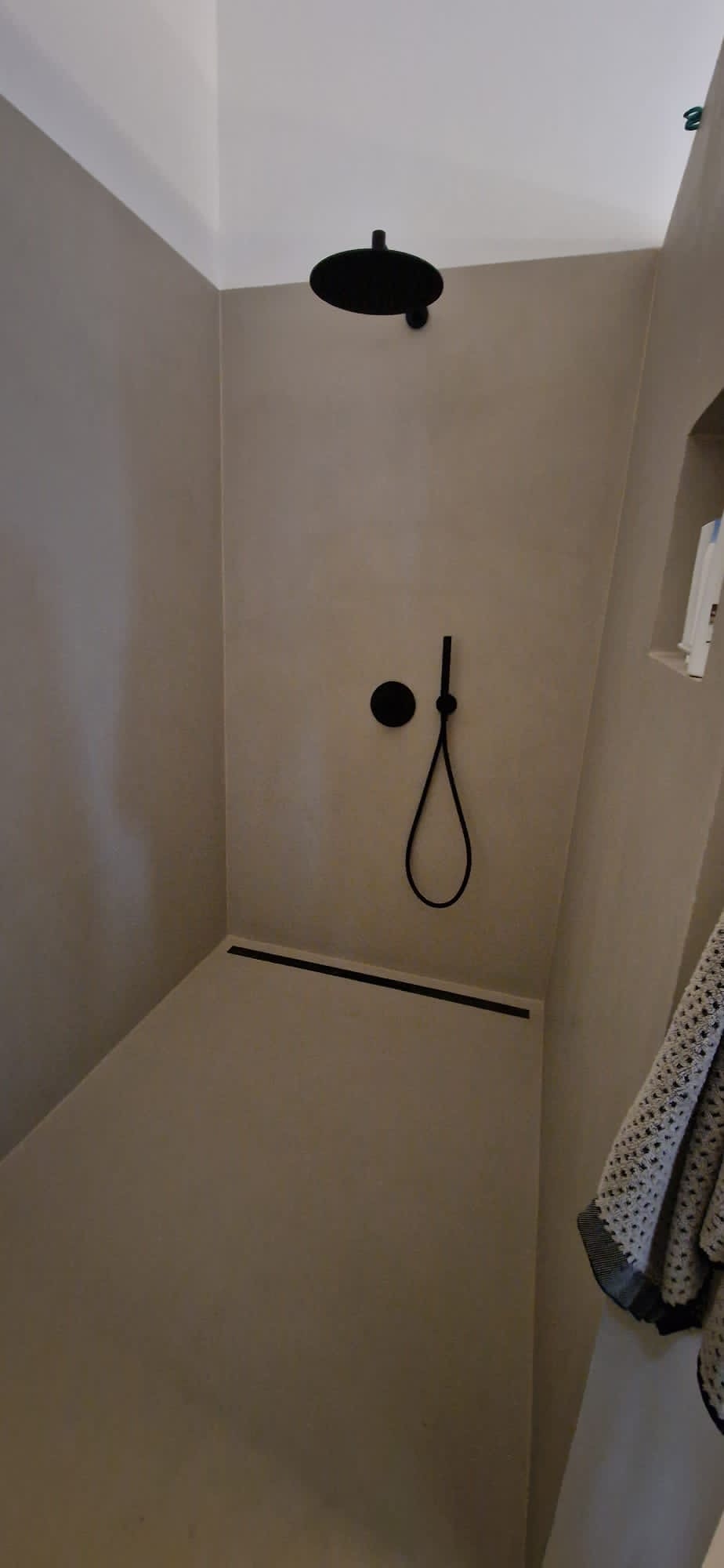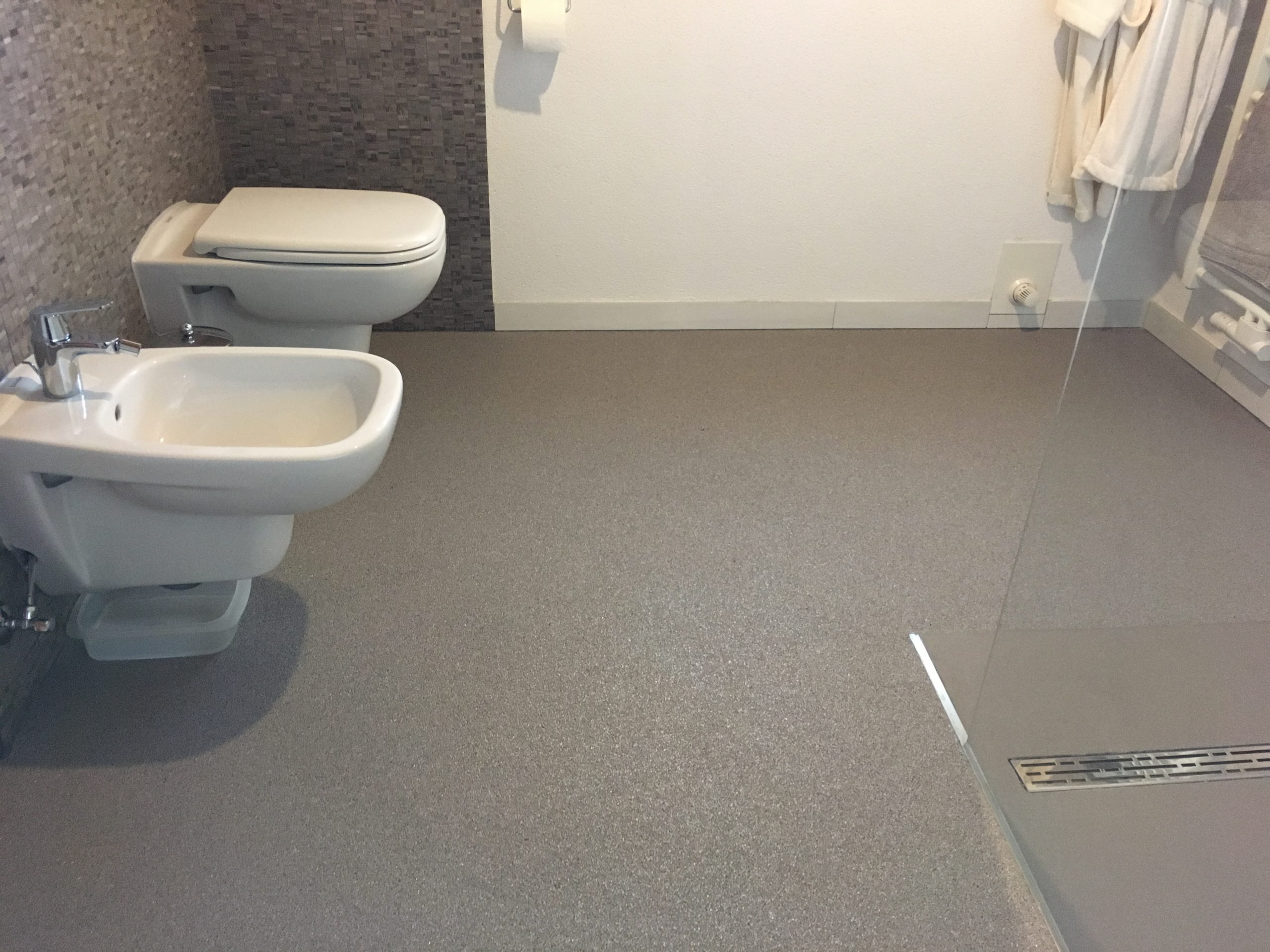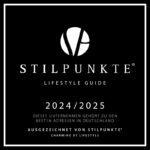The first part of our screed series dealt with fundamental questions about screed. We looked at how screed is produced, whether it is suitable for underfloor heating and why a screed is a good prerequisite for our Qubo® floor coatings such as stone carpet, microcement, epoxy resin and Qubo® Terrazzo. In this section you will find an overview of the different types of screed and their properties.
Differentiation of screed types according to their binders 5 different screed types
The binder is the main component of the screed. It also consists of an aggregate, water, additives and admixtures. There are five different types of screed based on the binder
- cement screed
- calcium sulfate screed / anhydrite screed
- mastic asphalt screed
- magnesia screed
- synthetic resin screed
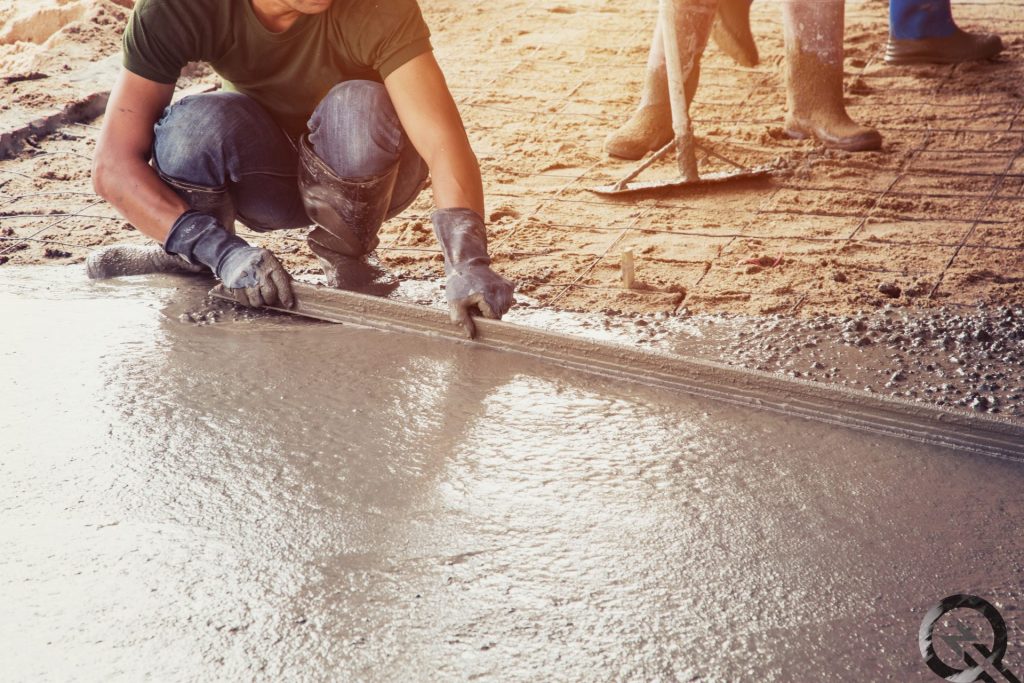
Concrete screed
The classic screed type is the cement screed. It is produced by mixing gravel in various grain sizes (from fine to usually 8 mm), water and cement. It is most commonly used in private and commercial applications. It can be used both indoors and outdoors and can be produced in several strength classes. Once hardened, it has the advantage of being resistant to water. Cold and heat are also no problem. It is also inexpensive and suitable as a heating screed.
Calcium sulfate screed / anhydrite screed
Anhydrite screed is no less widespread than cement screed. It is also known as calcium sulphate screed, as the binding agent here is calcium sulphate. This is burnt gypsum. In addition to gypsum, the anhydrite screed consists of water and a few additives.
It is dimensionally stable, largely free of cracks and can be walked on very quickly. Anhydrite screed is easy to work with as it is very easy to apply and remove. The hardness of calcium sulphate screed can be increased by adding synthetic resins. As it is thermally conductive and causes little tension, it is often used as a heating screed in drywall construction despite its limited heat resistance. Unlike cement screed, however, it is not suitable for damp rooms or for laying outdoors, as gypsum easily absorbs water.
Caution! From a health point of view, it is to be classified as questionable if the calcium sulphate was obtained artificially and the screed contains many chemical additives.
Mastic asphalt screed
In contrast to other types of screed, mastic asphalt screed is deep black. This is due to its binding agent, bitumen, which is obtained from the distillation of crude oil. Sand, grit and stone powder are added to the bitumen to create the mastic asphalt screed.
It is applied at high temperatures between 220 and 250 degrees Celsius. As a result, this type of screed does not need to be compacted. There are also no long drying times. Other advantages of the not-so-cheap mastic asphalt screed are as follows:
- It is ready for occupancy after just one day
- It is suitable for wet rooms and outdoor areas
- It is heat and footfall sound insulating
Compared to other types of screed, it requires comparatively low installation heights. Due to its elasticity, it hardly reacts with stresses when temperatures fluctuate.
One disadvantage is that its processing can produce emissions that are harmful to health.
Magnesia screed
Also known as stone wood screed, magnesia screed consists only of organic and not artificial additives. This is why it is often used in old building renovations or ecological new builds. However, when laying the magnesia screed, it is important to ensure that the room temperature is not below 10 degrees Celsius. The room should also be dry. It also does not tolerate moisture during and after the drying phase.
Once the screed has been laid, it can be walked on approximately two days later and can be loaded after a further three days. Further advantages of this ecological screed are that it can also be used to lay large areas without joints. The screed can be colored on request. Shrinkage cracks rarely occur.
Synthetic resin screed
To produce the synthetic resin screed, synthetic resin mortar is mixed with a synthetic binder such as epoxy resin or polyurethane, as is the case with many of our decorative floors*. Quartz sand is added as an aggregate. Synthetic resin screed is a so-called bonded screed. This means that it bonds firmly with the substrate.
This screed must be mixed specifically for the intended construction site and is not easy to work with, which is why the work should definitely be carried out by a professional. At the end of the day, however, its advantages outweigh its disadvantages: It is very robust and hard-wearing as well as insensitive to moisture and cold.
* Our decorative floors include stone carpet, microcement, epoxy resin and Qubo® Terrazzo.
Differentiation of screed types according to construction & function Screed on insulating layer: Floating screed or heated screed
The purpose of this type of screed is to improve the thermal insulation and impact sound of floors. As the screed slab can be moved in all directions after installation, this is also referred to as a floating screed. A screed produced on an insulating layer is movable on its base and has no direct connection to walls or other components such as pipes or supports. For this reason, compressible plastic strips must be installed as an edge boundary to the walls.
The nominal thicknesses for cement screeds on insulating layers depend on various factors. These include the use – heated or unheated screed – the bending tensile strength of the screed, as well as the type and thickness of the insulation layer.
If heating elements are installed in the screed or the insulation layer, this is known as a heated screed.
Screed on separating layer
Here, the screed is separated from the load-bearing substrate by a thin multi-layer intermediate layer. A screed on a separating layer is used if no thermal or sound insulation is required. It is usually used for basements, balconies and terraces.
The structure is similar to that of a floating screed. A separating layer made of polyethylene film or raw glass fleece, for example, is applied to the unfinished floor. With the exception of mastic asphalt screed, the separating layer is applied in two layers. This reduces friction on the substrate and prevents anchoring points caused by displacement of the separating layers during the installation phase. The final waterproofing layer serves to protect against moisture penetrating from the floor.
In addition, small floor irregularities can be evened out by installing a separating layer. The thickness of the subsequently applied flowing screed depends on the binder used. For cement screed, the thickness should not be less than 35 mm. For calcium sulphate and magnesia screed, the thickness should be at least 30 mm, for mastic asphalt screed 25 mm and for synthetic resin screed at least 15 mm.
Composite screed
This type of screed is particularly suitable for high loads. The bonded screed is directly connected to the floor below and this is one of the reasons for its high stability. It is a simple and cost-effective option if a sound and heat-absorbing intermediate layer is not required. This is why it is often used in basements and garages.
As the screed of this type lies directly on the substructure and must be firmly bonded to it, it is ideally created using the wet-on-wet method: The bonded screed is applied while the cement-bound substructure is still damp. In order to achieve good adhesion and avoid expansion cracks, the material properties of the screed should be as identical as possible to those of the substructure.
Hard aggregate screed
Hard aggregate screeds are mainly used as industrial screeds in garages, warehouses and production halls. The screeds used in heavy-duty industrial applications are also known as hard aggregate screeds, as they contain hard materials that are particularly resistant to abrasion. These include natural stone, metals, slag, electrocorundum and silicon carbide. They are divided into three stress groups. Suitable binders are cement, magnesia, mastic asphalt and synthetic resins. Cement-bound hard aggregate screeds are applied in a single layer in a bond or in two layers on a separating or insulating layer. The requirements for the transition layer under the hard aggregate screed layer are precisely described in the standardization for the two-layer design. The thickness of the hard aggregate screed layer depends on the load group and the strength class required and varies between 4 and 15 mm depending on the hard aggregates used.
Industrial screed
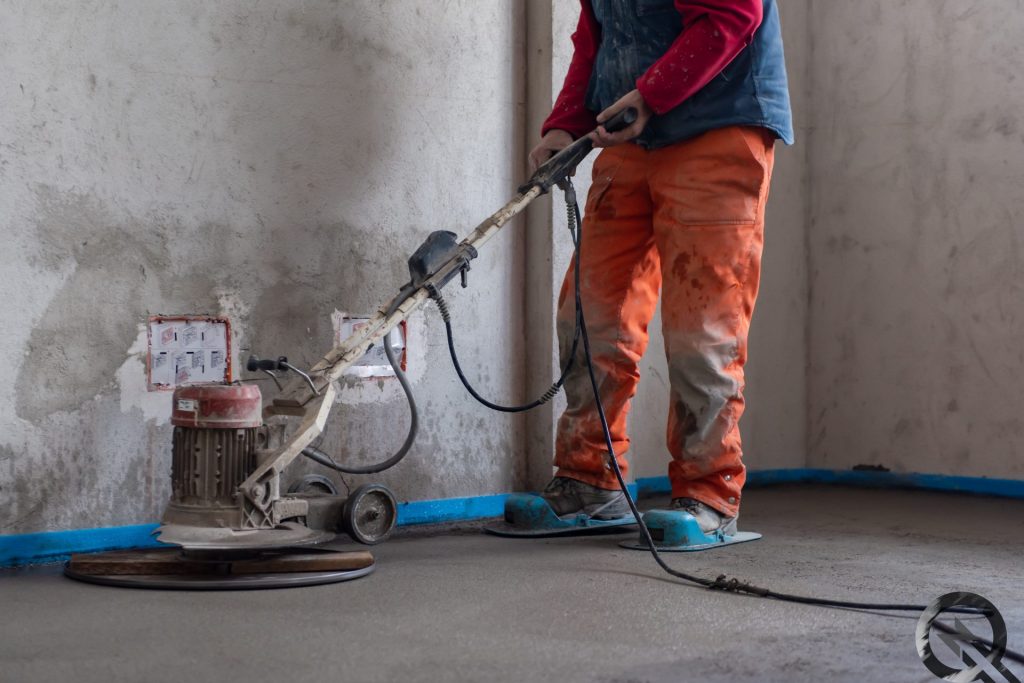
When it comes to renovating old buildings or floors subject to particularly high levels of stress in industrial and commercial buildings, it is all about professional, efficient solutions that can only be carried out by a qualified master craftsman. Our partners in the use and production of special screeds offer you professional advice and implementation of your special requirements. This includes the creation of epoxy resin screeds, rapid and drainage screeds, lightweight screeds, fillers and concrete smoothing. But our sanding experts are also the first choice when it comes to creating and sanding our Qubo® Terrazzo.
Due to the special requirements that an industrial screed must fulfill, it is also referred to as a commercial screed.
An industrial screed has the following tasks:
- resistance to chemicals and acids
- accessibility for forklift trucks etc.
- slip resistance
- wear resistance
- stability
- abrasion resistance
Differentiation of screed types according to production
Construction site screed
When we talk about screed in general, we usually refer to building site screed. It can contain different binders. From calcium sulphate to magnesia and cement. This type of screed is either freshly mixed on the construction site or delivered as a prepared screed. The screed layer spreads the screed mortar damp on the floor and then removes it with a special tool. This procedure must beabsolutely straight and accurate so that no unsightly unevenness forms at the end of the day and is transferred to the floor that is laid later.
Flowing screed
Due to the physically extremely strenuous processing of the building site screed, flowing screed is often preferred nowadays. When using it, there is no need to level the screed horizontally. The mass practically levels itself thanks to gravity. The fact that the screed flows so well is due to the addition of a superplasticizer, which is homogeneously mixed with the screed material in a mixing pump. The air pockets are then knocked out with a whisk. This allows the screed to be poured onto the floor without any further aids.
Although the flowing screed does not have to be spread, compacted, rubbed down and smoothed mechanically or manually, it is better not to underestimate this process and hire a professional.
Dry screed
If the floor covering needs to be laid quickly, laying dry screed is the perfect solution. This is usually the case if you are planning the new construction, extension or conversion of a room or an entire house and you only have a short time window. In addition, dry screed does not introduce any additional moisture into the building structure, as is the case with flowing screed.
In contrast to flowing screed, the specialist does not apply the dry screed as a mass on site, but lays it as individual panels. These are part of the dry construction method and usually consist of gypsum and a cementitious layer.
Other advantages of dry screed include the fact that it dries within 24 hours, requires only a minimum installation height and is temperature-independent. It is quick and easy to handle and is suitable for a wide variety of floor coverings.
Preview - Alternatives for exposed screed from Quarzkiesboden Zimmermann
All of the screed types described here form a base for the subsequent top floor. This distinguishes them from another, special variant that we have not yet looked at: The exposed screed. This is very much in vogue and is desired by many builders. However, there is often a discrepancy between the idea and the reality. That’s why we present alternatives to exposed screed in the third part of our series at. These will not only help you avoid potential misunderstandings during the construction planning stage, but will also ensure that your home …
… for a strong appearance!
